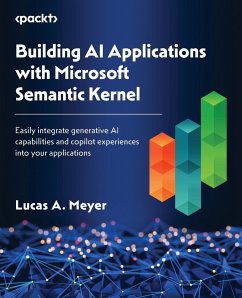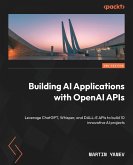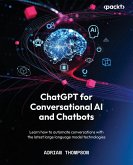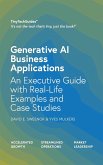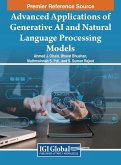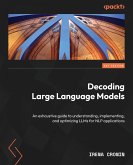Unlock the power of GenAI by effortlessly linking your C# and Python apps with cutting-edge models, orchestrating diverse AI services with finesse, and crafting bespoke applications through immersive, real-world examples Key Features - Link your C# and Python applications with the latest AI models from OpenAI - Combine and orchestrate different AI services such as text and image generators - Create your own AI apps with real-world use case examples that show you how to use basic generative AI, create images, process documents, use a vector database - Purchase of the print or Kindle book includes a free PDF eBook Book Description In the fast-paced world of AI, developers are constantly seeking efficient ways to integrate AI capabilities into their apps. Microsoft Semantic Kernel simplifies this process by using the GenAI features from Microsoft and OpenAI. Written by Lucas A. Meyer, a Principal Research Scientist in Microsoft's AI for Good Lab, this book helps you get hands on with Semantic Kernel. It begins by introducing you to different generative AI services such as GPT-3.5 and GPT-4, demonstrating their integration with Semantic Kernel. You'll then learn to craft prompt templates for reuse across various AI services and variables. Next, you'll learn how to add functionality to Semantic Kernel by creating your own plugins. The second part of the book shows you how to combine multiple plugins to execute complex actions, and how to let Semantic Kernel use its own AI to solve complex problems by calling plugins, including the ones made by you. The book concludes by teaching you how to use vector databases to expand the memory of your AI services and how to help AI remember the context of earlier requests. You'll also be guided through several real-world examples of applications, such as RAG and custom GPT agents. By the end of this book, you'll have gained the knowledge you need to start using Semantic Kernel to add AI capabilities to your applications. What you will learn - Write reusable AI prompts and connect to different AI providers - Create new plugins that extend the capabilities of AI services - Understand how to combine multiple plugins to execute complex actions - Orchestrate multiple AI services to accomplish a task - Leverage the powerful planner to automatically create appropriate AI calls - Use vector databases as additional memory for your AI tasks - Deploy your application to ChatGPT, making it available to hundreds of millions of users Who this book is for This book is for beginner-level to experienced .NET or Python software developers who want to quickly incorporate the latest AI technologies into their applications, without having to learn the details of every new AI service. Product managers with some development experience will find this book helpful while creating proof-of-concept applications. This book requires working knowledge of programming basics. Table of Contents - Introducing Microsoft Semantic Kernel - Creating Better Prompts - Extending Semantic Kernel - Performing Complex Actions by Chaining Functions - Programming with Planners - Adding Memories to Your AI Application - Real-World Use Case - Retrieval-Augmented Generation - Real-World Use Case - Making Your Application Available on ChatGPT
Hinweis: Dieser Artikel kann nur an eine deutsche Lieferadresse ausgeliefert werden.
Hinweis: Dieser Artikel kann nur an eine deutsche Lieferadresse ausgeliefert werden.

